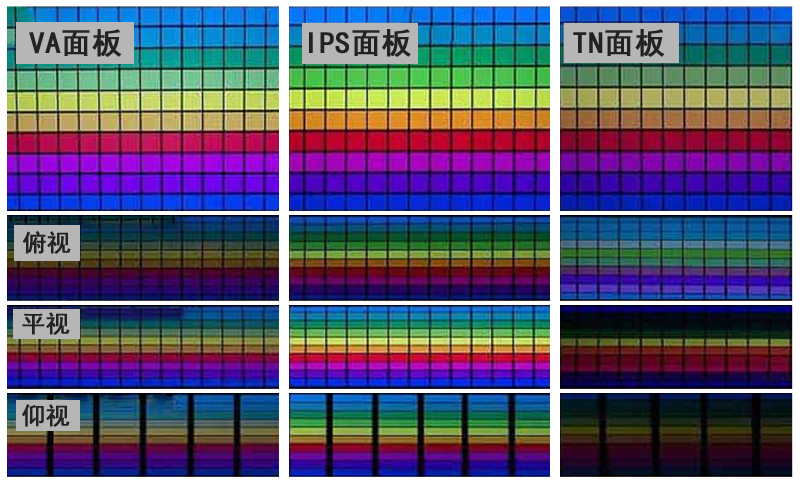TFT LCD Display Mode
Under the action of external electric field, the arrangement direction of liquid crystal molecules changes, so as to control the degree of light passing through the liquid crystal. Generally, the change of liquid crystal molecular orientation when the external field reaches a certain intensity is called fredericksz transition. Using the fredericksz transformation principle, different liquid crystals can show different display modes. The following describes several display modes often used in TFT LCD: TN display mode, IPS display mode and VA display mode.
1、 TN display mode
The concept of twisted nematic (TN) display mode comes from two parts: one is to inject nematic liquid crystal into the display screen, and the other is to form a 90 degree twisted alignment structure in the display screen. The twisted alignment structure will make the nematic liquid crystal twist the incoming linear polarization under the action of external voltage and output. This unique phenomenon of TN display mode is called optical rotation. TN display mode in the case of no applied voltage, the backlight is transmitted and appears white, commonly known as "constant white mode". If a longitudinal voltage is applied to the upper and lower sides of the liquid crystal, most of the liquid crystals in the liquid crystal layer are vertically distributed. The linearly polarized light passing through the TFT side polarizing plate passes through the liquid crystal layer without deflection and is parallel to the polarizing axis of the CF side polarizing plate. The linearly polarized light is absorbed and no light is emitted, so it presents a black state.
2、 IPS display mode
In plane switching (IPS) display mode is characterized in that the liquid crystal molecules aligned by homogenize rotate in the plane parallel to the glass substrate after applying voltage between comb electrodes, causing birefringence to control the light transmission. For TFT LCD in IPS display mode, the brightness after backlight transmission basically does not change with the change of viewing angle, so IPS LCD naturally has a wide viewing angle display mode. However, the electrodes of IPS display mode are designed on the same side, and the distance between electrodes should not be too close. On the one hand, such a structure will reduce the opening rate of pixels, on the other hand, IPS LCD is required to have a large driving voltage.
3、 VA display mode
The vertical alignment (VA) display mode is characterized by the alignment of liquid crystal molecules perpendicular to the glass substrate. The polarization axes of TFT side polarizer and CF side polarizer used in VA display mode are orthogonal. VA display mode has the best black state and can achieve the best contrast. VA LCD screen is born with high contrast display mode. However, in order to obtain better viewing angle characteristics of VA LCD, optical compensation in different tilt directions needs to be designed.

The above is a brief introduction to the three display modes of TFT LCD: TN display mode, IPS display mode and VA display mode. Each display mode has different advantages and disadvantages. Helping customers choose the most appropriate display mode is the service purpose of professional LCD manufacturers such as Deruxi.
